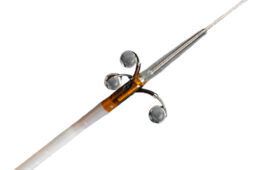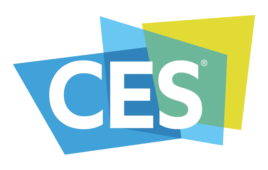Connected drug-delivery devices provide quantitative data on medication uses that may improve patient engagement and a move toward value-based payments.
Iain Simpson, Phillips-Medisize

Phillips-Medisize brought to market a fully electronic auto-injector designed to track injection history and share treatment information with healthcare providers. (Image from Phillips-Medisize)
Healthcare has become increasingly digitalized in the past decade, with the widespread adoption of electronic health records (EHR), connected devices in hospitals and laboratories, and smartphones and tablets to support healthcare professionals.
At the same time, prescription medication — especially for patients with chronic diseases — is increasingly being taken at home rather than in the hospital, underscoring the need to explore and expand mobile digitalization to monitor adherence.
Fortunately, the widespread availability of low-cost connectivity such as Bluetooth and near-universal access to mobile technologies such as smartphones have opened the door to new opportunities in this arena. With smartphones already integral to most patients’ lives across the globe, the logical next step is to use them as tools to support both medication adherence and disease management.
A belief in the potential of connectivity to improve medication adherence through better usability, medication reminders, remote patient support and other features that support behavioral change has driven the development of connected drug-delivery devices. But, as the healthcare industry continues its march toward a value-based payment model in lieu of a volume-based one, the landscape is set to change.
Aligning patient, provider and pharma company needs with the healthcare reimbursement process is critical and probably best accomplished by shifting the focus from adherence alone to improving outcomes. But adherence is only one part of the story. A poor outcome for a therapeutic intervention could be a result of non-adherence and/or non-response. A step beyond value-based healthcare is recognizing that all patients are not the same, so prescribing the same dose to all may not be optimal. We need to move toward precision or personalized medicine, where treatment is tailored to individual needs.
Supporting outcomes-based payment
In addition to providing a better patient experience, connected drug-delivery devices can generate reliable data in near-real-time, allowing providers, payers and pharma companies to understand what works and what doesn’t. Healthcare providers can use medication usage data collected directly from devices and integrated with electronic patient-reported outcomes (ePROs) and digital biomarkers to understand medication performance under real-world conditions as well as monitor treatment performance on individual and cohort levels. These data can also be integrated into EHRs, which help aggregate diagnostic data, prescriptions, treatment adherence and outcome measurements. These digital advantages provide a two-fold benefit: the ability to accurately support outcomes-based payment and to deliver more responsive, personalized healthcare.
Looking toward the future, smartphone-connected tracking will monitor patient activity, sleep and other behavior to further quantify medication efficacy. In addition to supporting reimbursement in today’s value-based environment, these data can help healthcare providers better tailor and improve the effectiveness of their patient treatment plans.
Creating a win-win opportunity
Trailblazers who are willing to invest in the development of innovative, connected drug-delivery devices have a unique opportunity to create a win-win situation for all stakeholders. As with any development project, the right partner is key.
Choose an end-to-end manufacturing partner who has an established track record in helping pharma and drug-delivery device companies speed time to market by streamlining design and production; who understands the unique regulatory requirements of the local market; and who offers a scalable connected-health platform that enables secure information-sharing and analytics and the flexibility to accommodate multiple therapeutic areas.
Evidence increasingly demonstrates that patients who use connected drug-delivery devices have high levels of medication adherence and persistence longer-term. Consistently high adherence adds value, since medications cannot help patients who don’t take them. Connected drug-delivery devices can play a critical role in reliably capturing real-world data on medication use.
These data can support better decision-making, more effective use of relatively expensive resources and improved reimbursement. When combined with patient-reported outcomes and digital biomarker data from wearable biosensors, they have powerful potential to improve outcomes and quality of life for patients living with chronic disease.
Iain Simpson is a director of front-end innovation at Phillips-Medisize. He has more than 25 years of experience in multi-disciplinary technology and product development, with an increasing emphasis on the use of devices and digital technologies.
The opinions expressed in this blog post are the author’s only and do not necessarily reflect those of Medical Design and Outsourcing or its employees.




